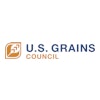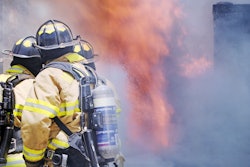
Earlier this year, the U.S. Occupational Safety and Health Administration (OSHA)withdrew its emergency temporary standardthat called for a vaccine-or-test mandate for private businesses with 100 or more employees.
While this withdrawal effectively ended litigation around the vaccine mandate, employers should take note of several other regulatory avenues forCOVID-19 workplace rulesoutlined in this article. For example, the agency will continue to conduct COVID-19-related inspections at worksites where employees have a high frequency of close contact exposures.
OSHA’s withdrawal followed a highly anticipated January 13 decision by the Supreme Court, which ruled that OSHA exceeded its authority by trying to regulate a hazard that is not specific to the workplace, Congress had not given OSHA specific authority to regulate such a broad hazard, and the power to regulate the hazard rests with Congress and the states.
State plans
The basis of the court’s decision relates only to federal OSHA’s authority to regulate without a clearer delegation from Congress.
The ruling does not block states from issuing their own versions of a vaccination mandate.
There are currently 22 state plans covering both private sector and state and local government workers, and there are six state pans covering only state and local government workers.
State plans are monitored by OSHA and must be at least as effective as OSHA in protecting workers and in preventing work-related injuries, illnesses and deaths. For example, California OSHA recently updated their COVID-19emergency temporary standardregarding masks.
Other avenues for COVID-19 regulations include:
General Duty Clause
Importantly, the General Duty Clause of the Occupational Safety and Health (OSH) Act and OSHA’s National Emphasis Program for COVID-19 remains in effect.
Employers must continue to evaluate whether they are making reasonable efforts to protect their employees from pandemic hazards when measured against the multitude of various guidance from OSHA and the Centers for Disease Control and Prevention (CDC) for COVID-19 workplace protocols.
“Regardless of the ultimate outcome of these proceedings, OSHA will do everything in its existing authority to hold businesses accountable for protecting workers, including under the COVID-19 National Emphasis Program and General Duty Clause (GDC),” stated Secretary of Labor Marty Walsh in a January press release.
Consequently, employers should have a written COVID-19 prevention and control plan in place.
The OSH Act requires all employers to provide “employment, and a place of employment, free from recognized hazards likely to cause death or serious injury or disease.”
During an OSHA inspection, the compliance safety and health officer can determine if the employer is showing good faith in addressing workplace safety and health.
Having a written program in place for COVID-19 shows that the employer is in the process of mitigating a potential hazard even if it has not been fully implemented. Templates for these programs can be found on the OSHA and CDC Websites.
Infectious Disease Standard
According to the Fall 2021 Semi Annual Regulatory Agenda published in early December, OSHA is “examining regulatory alternatives for control measures to protect employees from infectious disease exposures to pathogens that can cause significant disease.”
The agency is considering long-standing infectious disease hazards like tuberculosis and measles as well as new and emerging infectious diseases such as COVID-19 and pandemic influenza.
OSHA’s timetable indicates that the agency plans to issue a proposed rulemaking in April 2022.
As part of theEmployers COVID-19 Prevention Coalition, NGFA submitted comments to OSHA in January, in which coalition members promoted cooperative programs and alliances in lieu of additional regulations and requested certain changes in guidance and expectations if OSHA proceeds with a different enforcement strategy moving forward.
NGFA will continue to monitor federal regulations regarding workplace health and safety. Readers with questions about workplace regulations should contact Jess McCluer, NGFA’s vice president of safety and regulatory affairs, at 202-289-0873.




















